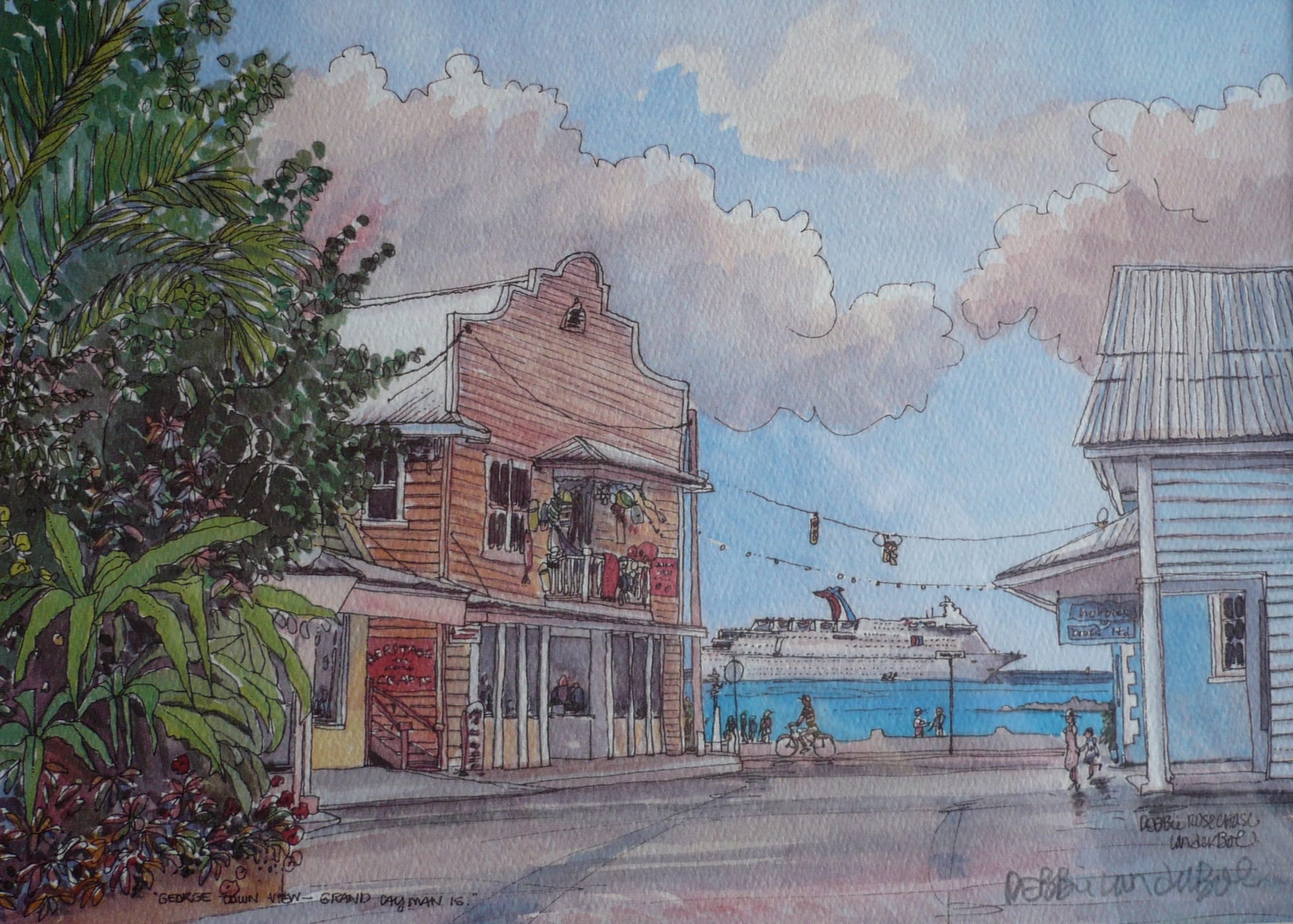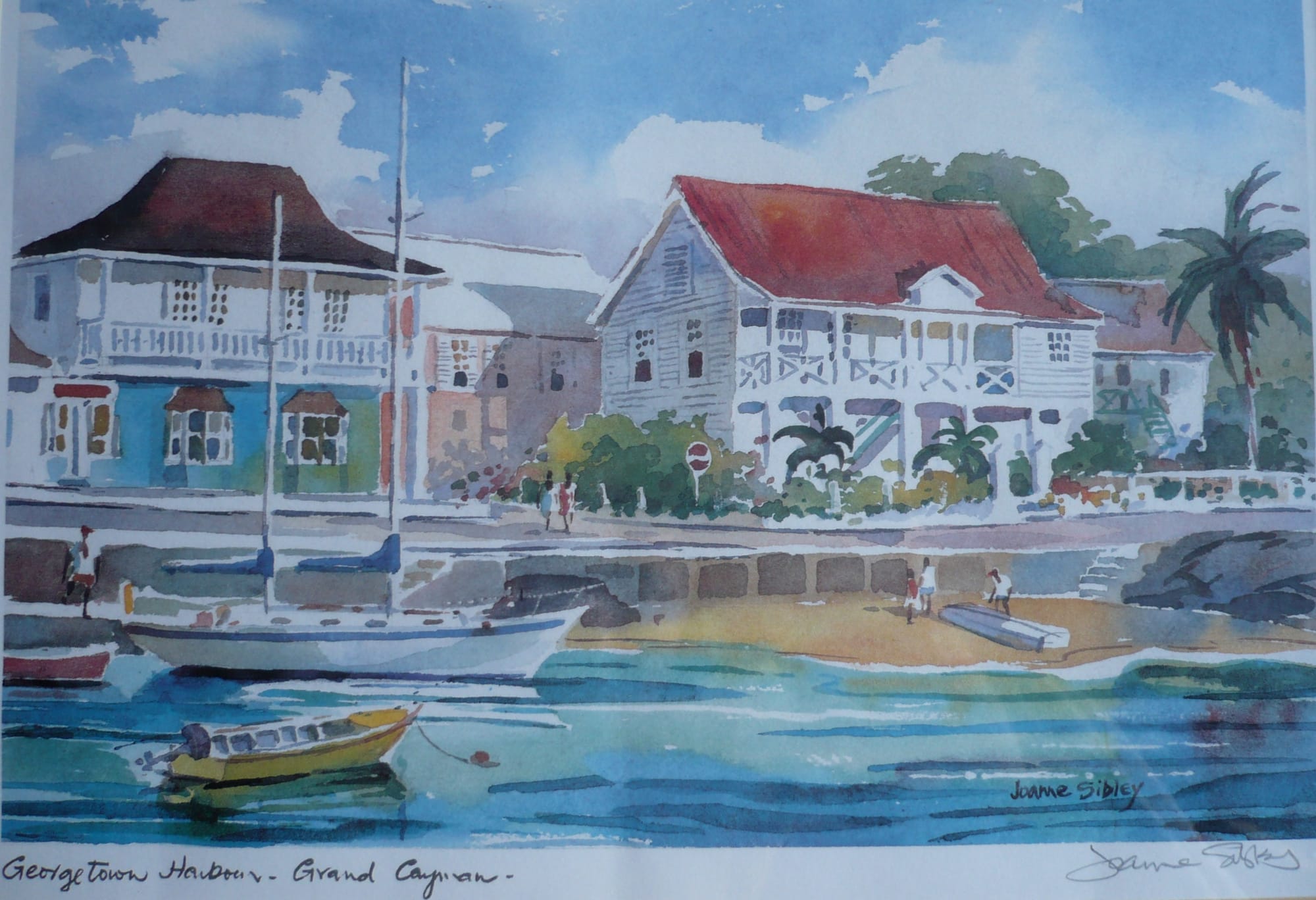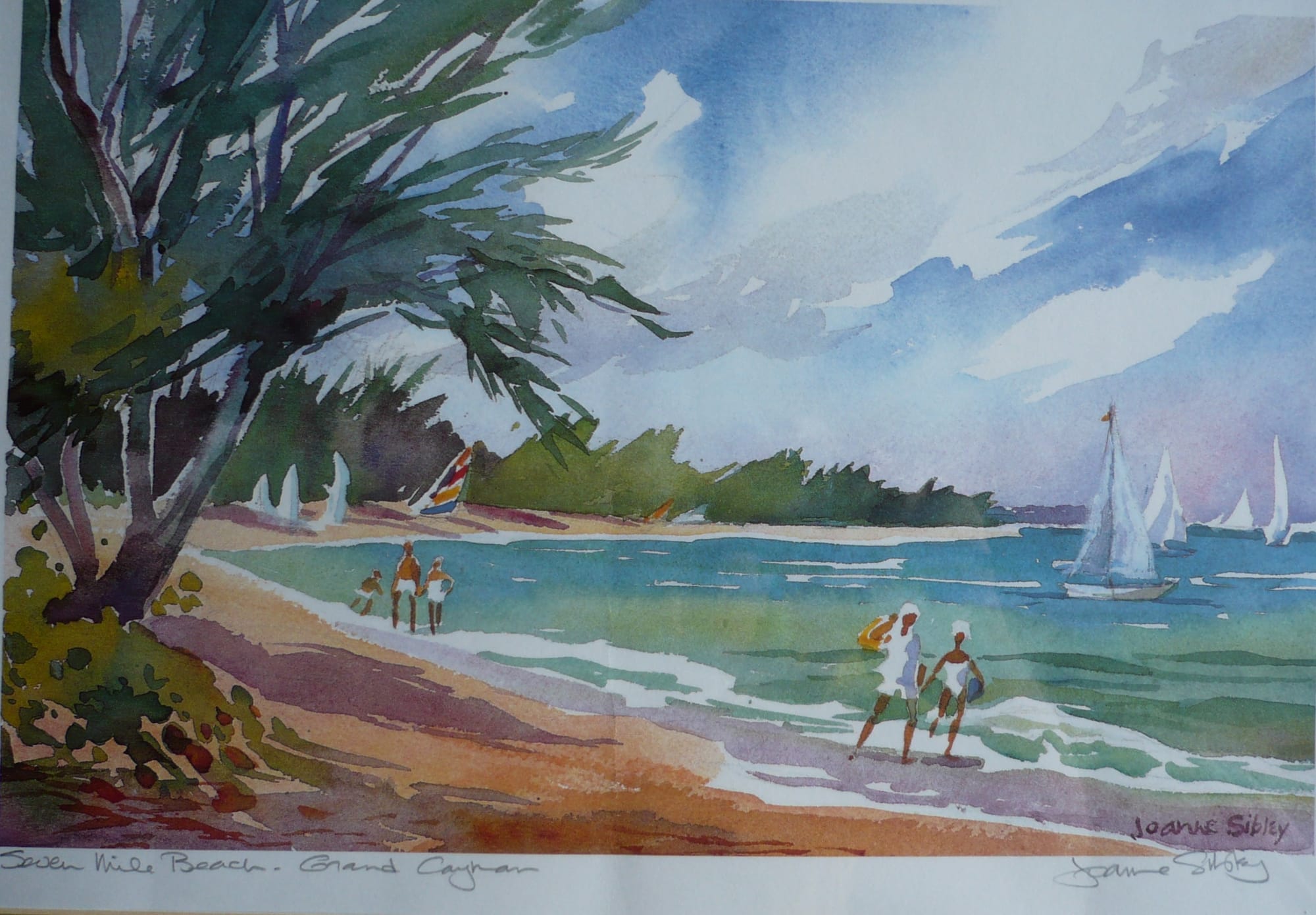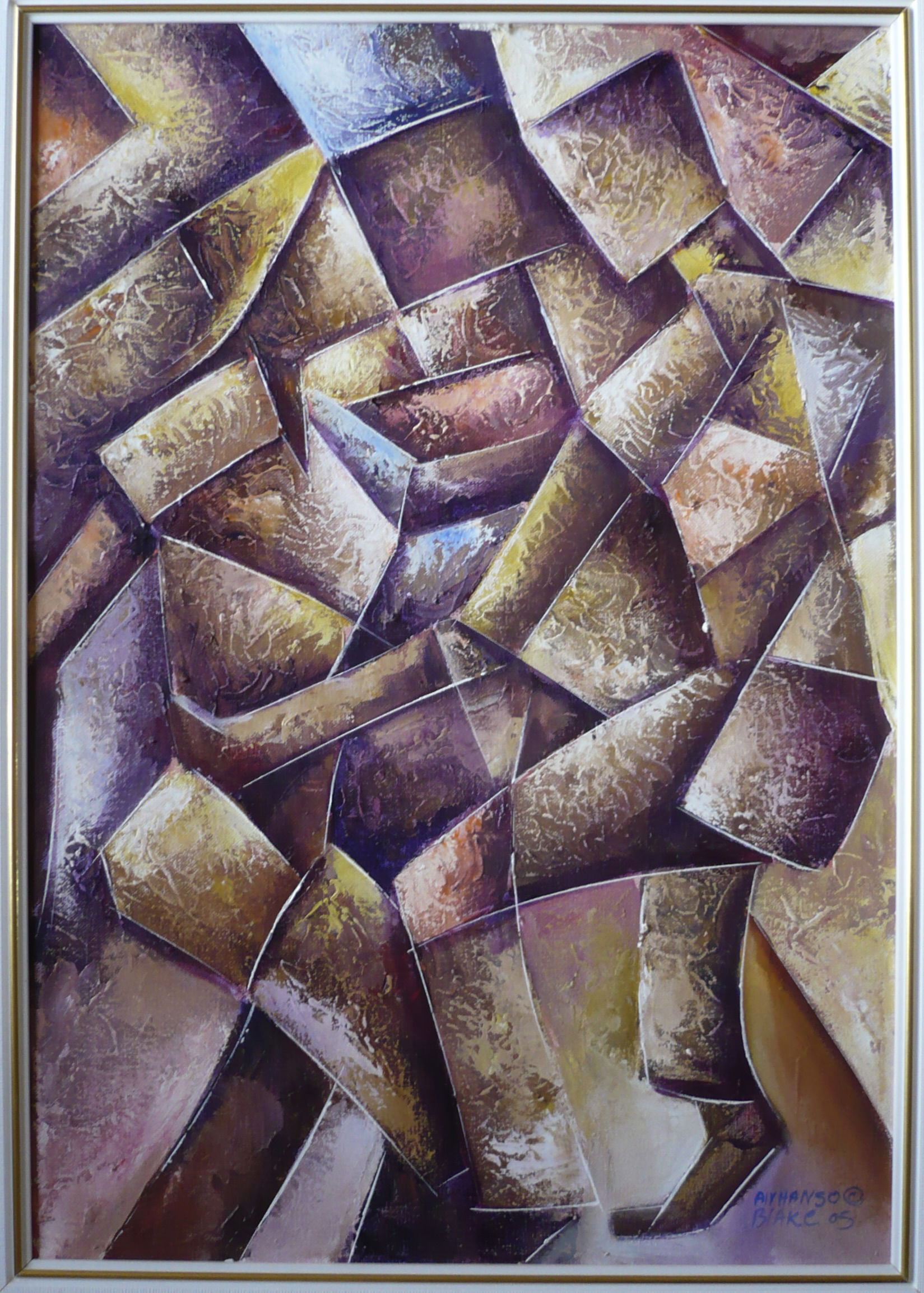Island Memory – Caribbean Perspectives
Welcome to the Caribbean
I was fortunate enough to spend a few weeks in the Cayman Islands—work-related, so essentially free! While there, I couldn’t resist acquiring these original pieces. Each one, in its own way, captures the island’s dual essence: its tranquil beauty and the growing presence of mass tourism. Debbie Chase van der Bol’s George Town View offers a wry commentary on commercial intrusion, subtly juxtaposing natural charm with looming development. Joanne Sibley’s romantic renderings of George Town and Seven Mile Bay evoke a pre-tourism serenity—quiet, luminous, and steeped in nostalgia. And Alphanso Blake’s Tango, a Cubist abstraction, adds rhythmic complexity to the narrative, suggesting that Caribbean identity is as layered and multifaceted as its landscape
George Town, Grand Cayman by Debbie Chase van der Bol
Debbie Chase van der Bol’s George Town View, Grand Cayman is a quietly provocative piece that blends local realism with subtle social commentary. Painted by one of the Cayman Islands’ most respected artists, the work captures a familiar waterfront scene—but with a twist: a cruise ship looms in the background, symbolizing the tension between natural beauty and commercial tourism.

George Town, Grand Cayman by Joanne Sibley
Joanne Sibley’s George Town painting—often referred to as Harbour Drive—is a luminous tribute to mid-1990s Grand Cayman, capturing the waterfront before the rise of cruise ship tourism and urban congestion. It’s a work steeped in nostalgia and architectural memory, portraying a quieter, more intimate version of George Town that many locals remember fondly.

Seven Mile Bay, Cayman Islands by Joanne Sibley
This painting is a visual love letter to one of Grand Cayman’s most iconic natural features: Seven Mile Beach. Sibley captures the shoreline not as a tourist destination, but as a quiet, contemplative space, untouched by commercial noise. The work is suffused with soft light, gentle hues, and a sense of emotional stillness, inviting viewers to pause and reflect.

Tango by Alphanso Blake
Alphanso Blake’s Tango is a striking example of Caribbean Cubism, a style not often associated with the region but powerfully reinterpreted through Blake’s lens. The painting doesn’t just borrow from the Cubist tradition—it reclaims it, infusing geometric abstraction with rhythmic energy and cultural depth. The man and woman twist and interlock like puzzle pieces, their limbs echoing the syncopated beat of the tango. The palette—rich in ochres, siennas, and deep reds—adds to the sensual tension, while the Cubist structure suggests both emotional choreography and cultural layering. Blake’s Tango is not just a dance—it’s a dialogue. A visual rhythm that speaks to identity, intimacy, and the expressive power of abstraction.
